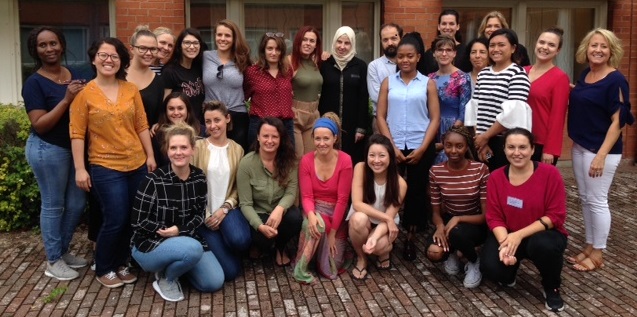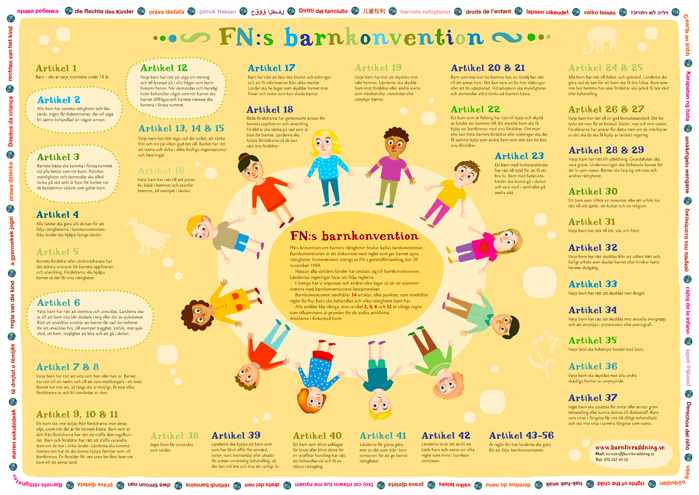February 1, 2021
The Master in Child Studies - Part 3
Hello, everyone!
This is the third part of the series of posts where I share my experience from the previous terms in Child Studies. Now that I am in my last term, it has been good to look back at everything I have learned. As many people have no idea about that Child Studies really comprises, I am writing about all the courses in this program, so you can check Part 1 and Part 2.
People who enroll in the Master Program in Child Studies have the option of doing a one-year program (60 credits) or a 2-year program (120 credits). Although I had already decided for the 2-year program, as in my home country a one-year program is considered a specialization and not a Master, this is a choice that students can make until April, to whether or not continue to the second year of the program. I had also heard from students enrolled in previous years how the courses in the second year provide a much more in-depth perspective into childhood, with the opportunity to discuss themes such as migration, sexuality and children’s health in more detail. Now that I am in the last term, I can confirm that this is true.

My class of 2019. Some students did a one-year Master, some have continued to the second year. Credits: Judith Lind.
However, even students who want to do the 2-year program must defend a thesis in the end of the first year. The 15 credits for the program’s first year thesis are a requirement to progress to the fourth term. And a lot of the second term is about that, as you’ll see by the following courses.
Research Methods in Child Studies
This course is about getting familiar with research methods in the social sciences and the singularities of doing research with children and youth or about concepts and practices of childhood under the childhood studies perspective.
What do I mean by that?
Different fields across the centuries have produced knowledge about childhood, children and practices of “growing up” and “bringing someone up”. Medicine, education, psychology, anthropology, law, philosophy, among many others, have thought and inquired about the lives of children, teenagers and families, and several of the current childhood practices and childcare institutions were built over the knowledge produced by these sciences, especially in the Western world and in societies where the scientific discourse holds great authority.
In the past few decades, more and more researchers have become interested in understanding childhood including the perspectives of children themselves, and as many other aspects of life, childhood and our views on children have changed and been affected by phenomena such as new technologies, globalization, new consumer habits, etc. The course provides students with knowledge on how to do research about childhood and how to critically understand and access the work done by other researchers, thus contributing to your own work and positioning it in dialogue with other scientific traditions.
Students learn about different methods to collect and analyze data, such as working with policy-making records, historical documents, interviews, surveys, observation in the field, analysis of visual data, among many others. After that, students focus on the methods that best suit the research they plan on doing for their first year thesis. By the end of the course, we submit a research proposal, which will be used to match students with thesis supervisors.
Children’s Rights
The second course of the second semester concerns a topic very dear for many students in the program. Nowadays, most people agree on the importance of safeguarding children’s rights, and a lot of initiatives are built on the grounds of the children’s rights discourse. However, the idea that children have universal rights is quite recent, and its historical and philosophical background derive from the human rights framework.

In Sweden, the UN Convention on the Rights of the Child has been incorporated to the country’s laws. Source: barnlivraddning.se
In this course, students understand how international and national provisions on children’s rights were established, and are challenged to reflect about how the rights of children are negotiated with the rights of parents and their communities. If there is no universal childhood, what aspects of children’s lives should be considered in the establishment of children’s rights? Do children and young people themselves have a saying in the negotiations for their rights? And what are the gaps and contradictions in the reinforcement of rights that appear to be so widely agreed on?
The first examination for this course was the last time I had an on-campus period with my classmates, in the end of February 2020. All on-campus periods after that were cancelled for my program, including the first year thesis presentations. Although it was a pity, I have no doubt that it was the best decision from the department, as people travelled long distances to participate in these periods.
As the Master Thesis course is not really a taught subject, but a time for doing your research with the guidance of your supervisor, I decided to focus this series of posts on the courses themselves. Since I have started to work on my research plan for the second year thesis, I will write about the differences in the two processes of thesis writing in a different post.
Bye for now and hit the comment section if you have any questions, I will be happy to answer them!




